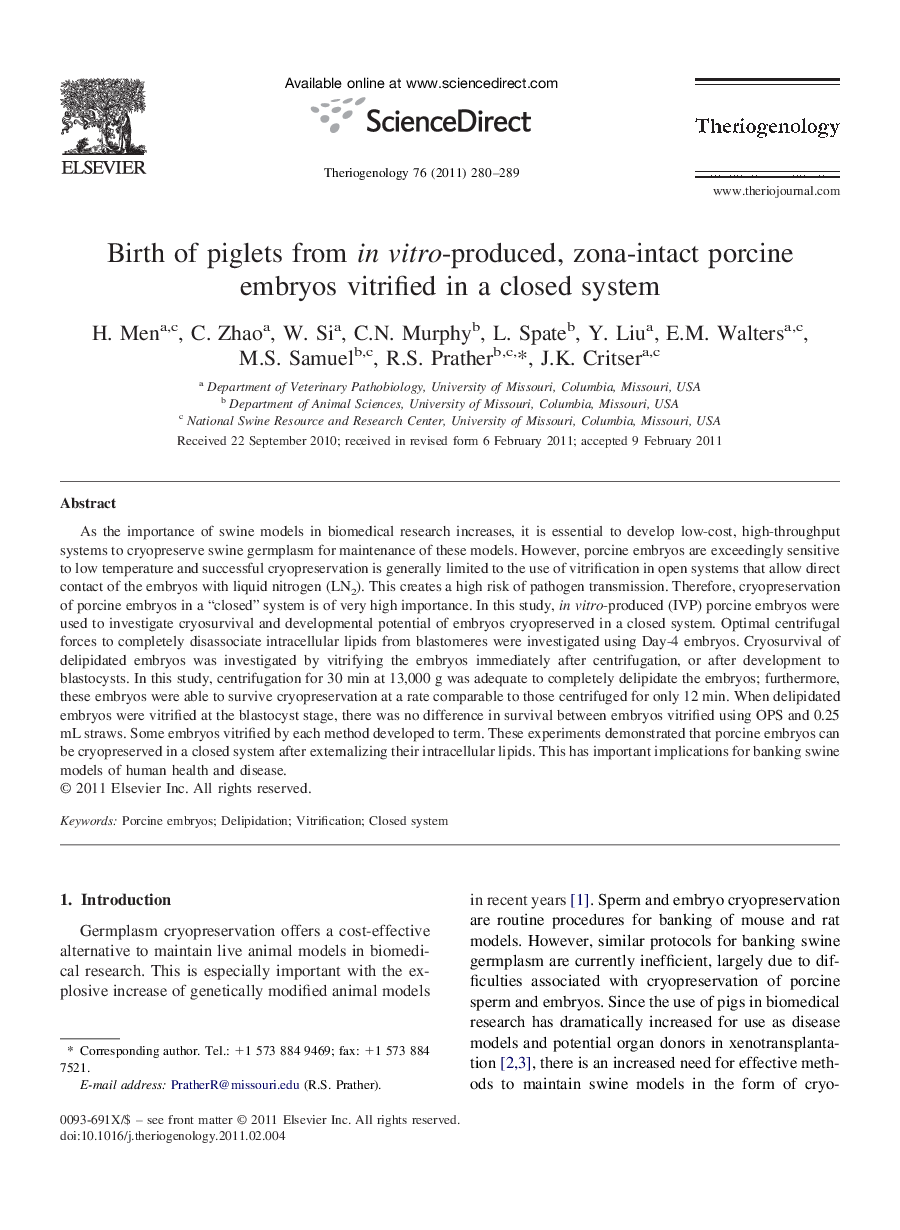| Article ID | Journal | Published Year | Pages | File Type |
|---|---|---|---|---|
| 10893051 | Theriogenology | 2011 | 10 Pages |
Abstract
As the importance of swine models in biomedical research increases, it is essential to develop low-cost, high-throughput systems to cryopreserve swine germplasm for maintenance of these models. However, porcine embryos are exceedingly sensitive to low temperature and successful cryopreservation is generally limited to the use of vitrification in open systems that allow direct contact of the embryos with liquid nitrogen (LN2). This creates a high risk of pathogen transmission. Therefore, cryopreservation of porcine embryos in a “closed” system is of very high importance. In this study, in vitro-produced (IVP) porcine embryos were used to investigate cryosurvival and developmental potential of embryos cryopreserved in a closed system. Optimal centrifugal forces to completely disassociate intracellular lipids from blastomeres were investigated using Day-4 embryos. Cryosurvival of delipidated embryos was investigated by vitrifying the embryos immediately after centrifugation, or after development to blastocysts. In this study, centrifugation for 30 min at 13,000 g was adequate to completely delipidate the embryos; furthermore, these embryos were able to survive cryopreservation at a rate comparable to those centrifuged for only 12 min. When delipidated embryos were vitrified at the blastocyst stage, there was no difference in survival between embryos vitrified using OPS and 0.25 mL straws. Some embryos vitrified by each method developed to term. These experiments demonstrated that porcine embryos can be cryopreserved in a closed system after externalizing their intracellular lipids. This has important implications for banking swine models of human health and disease.
Related Topics
Life Sciences
Agricultural and Biological Sciences
Animal Science and Zoology
Authors
H. Men, C. Zhao, W. Si, C.N. Murphy, L. Spate, Y. Liu, E.M. Walters, M.S. Samuel, R.S. Prather, J.K. Critser,
